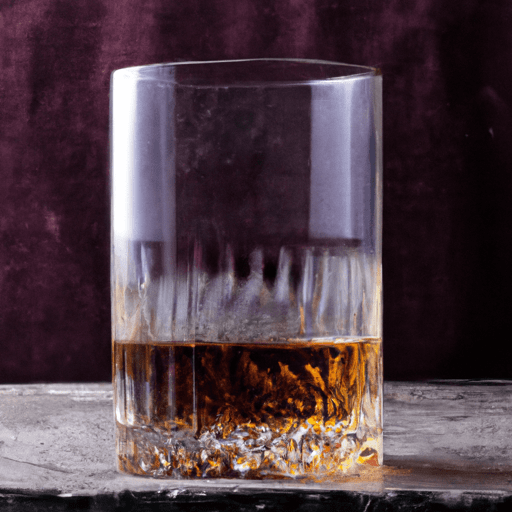The World of Brandy: A Cooking Essential
Brandy, with its rich history and distinctive taste, has long been a beloved ingredient in culinary circles. Whether sipped straight or used to add depth and complexity to various dishes, brandy offers a versatile addition to any kitchen arsenal. In this blog post, we will delve into the world of brandy, exploring its taste profile, common uses in cooking, nutritional value, and uncovering a few interesting historical tidbits along the way.
The Taste of Brandy: Elegance in a Glass
Brandy is a spirit distilled from fermented fruit juices, usually grapes. The aging process in wooden barrels contributes to its smooth and complex flavor profile. Brandy is often described as warm and velvety, with hints of fruit, spice, and a subtle sweetness. The aroma is enveloping, carrying notes of caramel, vanilla, and oak. The intensity of flavor can vary depending on the aging period, type of fruit, and the distillation process.
Enhancing Culinary Creations
Thanks to its distinct and refined flavor, brandy is a beloved ingredient in the culinary world. Here are some ways you can incorporate brandy into your cooking:
1. Sauces and Pan Deglazing
Brandy works wonders when added to savory sauces and gravies. Its complex flavors help to deepen the taste profile and bring out new dimensions in your dishes. Additionally, brandy is often used for deglazing pans, adding an extra burst of flavor to sautéed meats and vegetables.
2. Delightful Desserts
Brandy shines in dessert recipes, lending a touch of sophistication to your sweet creations. From flambéed fruits to boozy-infused cakes and puddings, the subtle warmth and fruity undertones of brandy can elevate even the simplest dessert to new heights.
3. Marinades and Preserves
Marinating meat or fruits in brandy can infuse them with unique and delightful flavors. The natural sugars in brandy can help tenderize meat while adding a subtle kick of complexity. Additionally, brandy is a popular choice for creating fruit preserves, which can be enjoyed on their own or as accompaniments to cheese boards and desserts.
Nutritional Value: A Calorie-Conscious Choice
While brandy is best enjoyed in moderation, it does offer some nutritional benefits. A standard serving of brandy (1.5 oz) contains approximately 98 calories and is low in carbs and sugar. It is also worth noting that brandy is gluten-free and does not contain any fats or cholesterol.
A Rich History and Fascinating Facts
Brandy’s roots can be traced back centuries, making it an integral part of culinary traditions worldwide. Here are a few intriguing historical facts:
- Brandy was first produced in the 12th century by alchemists attempting to create a panacea, an elixir capable of curing any ailment.
- Dutch traders popularized brandy amongst sailors as a means of preserving drinking water during long sea voyages. This practice later led to the birth of “brandywine” or brandy.
- Cognac, a renowned type of brandy, is exclusively produced in the Cognac region of Southwest France. It follows strict regulations and standards to ensure quality and authenticity.
Conclusion
With its captivating taste, versatile uses in cooking, and intriguing history, brandy continues to be one of the most beloved spirits in the culinary world. Whether you’re looking to enhance a savory sauce, add sophistication to a dessert, or unlock new flavors in marinades, brandy is a versatile ingredient that can elevate your culinary creations to new heights. So, why not embark on a culinary adventure and explore the world of brandy in your own kitchen? Cheers to the art of cooking with brandy!
Facts about Brandy:
- Brandy is a spirit that is made by distilling wine or fermented fruit juice. It has a high alcohol content, typically ranging between 35% and 60%.
- The origin of brandy can be traced back to the 12th century in the wine-producing regions of France. It was initially produced as a way to distill wine for long voyages, avoiding spoilage.
- Common types of brandy include Cognac, Armagnac, and Brandy de Jerez, which are named after the regions in which they are produced.
- Brandy is made through a process of distilling fermented fruit juice or wine. The liquid is heated, and the evaporated alcohol is condensed and collected, resulting in a higher alcohol concentration.
- Brandy is often enjoyed as an after-dinner drink and is commonly used in cocktails such as the Sidecar, Brandy Alexander, and the classic Brandy Sour.
- The flavor profile of brandy can vary depending on the type and aging process. It can range from fruity and floral to rich, oaky, and complex.
- Brandy is not a significant source of vitamins or minerals, but it does contain calories. The calorie content can vary depending on the specific brand and type, but on average, a 1-ounce (30 ml) serving of brandy contains approximately 64-70 calories.
- Brandy can be enjoyed neat, on the rocks, or used as an ingredient in cooking and baking. It is commonly used in making desserts like flambéed fruits and sauces.
- Some unique properties of brandy include its ability to enhance the flavors of the food it is paired with, and its potential for aging and improving over time, similar to wine.
- Brandy has historical significance, particularly as a preferred spirit of European aristocracy. It has been associated with luxury and refinement for centuries and is often considered a symbol of sophistication.
Note: As with any alcoholic beverage, it is important to consume brandy in moderation and be mindful of its effects.




Use the share button below if you liked it.
It makes me smile, when I see it.